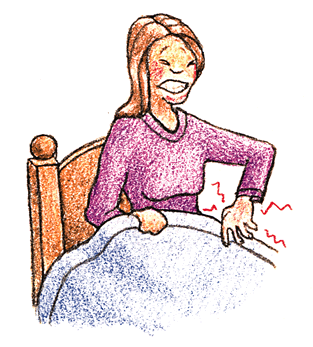Carpal Tunnel
Answering the Most
Frequently Asked Questions
J. Clinton Merrick, MD
Plastic & Hand Surgery
Merrick Plastic & Hand Surgery Clinic
Eau Claire
What is carpal tunnel syndrome?
Carpal tunnel syndrome (CTS) results from excessive pressure on the median nerve at the wrist. The median nerve (one of the three major nerves in the arm and hand) receives sensory input from the thumb through ring fingers and innervates the muscles at the base of the thumb.
Who gets CTS?
Although CTS is common in the general population, several risk factors do exist. Diabetes, rheumatoid arthritis and pregnancy are intrinsic risk factors. Job related activity, much talked about in social and legal circles, may not be as great of a factor as previously thought. Though repetition, vibration, mechanical force and posture have been linked to CTS, their direct relationship and exact mechanism by which they cause disease elude scientific inquiry.
 How is the diagnosis made?
How is the diagnosis made?
Diagnosing CTS is relatively straightforward. A hand and upper extremity surgeon will discuss the symptoms and general medical history with you. A physical exam will uncover abnormalities in sensation and strength, areas of nerve irritation and help to rule out other areas of nerve compression. Finally nerve conduction studies or EMGs will provide objective evidence, not only of the disease, but also its severity.
What are non-surgical methods of treatment?
Non surgical treatments are essential in managing CTS. One should be wary of a surgeon who insists upon the first meeting that surgery is the only course. Certain instances do call for early surgery, but these are the exception. Nighttime bracing with a splint which holds the wrist in a neutral position, anti-inflammatory medications and vitamin B6 can be very effective in delaying surgical intervention. Improving ergonomic factors in the home and workplace, as well as general exercise and stretching may have a positive impact. Finally, injection of a small amount of Kenalog (a form of steroid) with an anesthetic may both help alleviate the symptoms and help aid in the diagnosis in difficult cases.
When is surgery considered and what is involved?
Surgery is the final option for those that fail non-operative therapy or for those that present with moderate to severe CTS. Surgery can be performed using a local anesthetic and a mild sedative. The entire process from arrival to the surgery center to departure can usually be done in close to 2 hours. A small incision is made in the palm, the transverse carpal ligament is released under direct visualization, the nerve is inspected and the incision is closed usually with approximately 6 stitches. A soft dressing is placed and range of motion of the fingers is encouraged immediately.
What is the recovery period like?
When can one return to work? Recovery is usually between 2 and 4 weeks. Return to work, even to perform one handed related duties, is encouraged in one week. Sutures are removed in 2 weeks. Occasionally therapy is helpful for range of motion and scar management. Return of sensation and strength is dependent on two primary factors: the degree of dysfunction of the nerve preoperatively and the age of the patient.
I think I may have CTS, what is the next step?
It never hurts to seek advice early in CTS. Because such profound deformity is associated with complete loss of this nerve in the hand, early evaluation by a fellowship trained hand surgeon is essential. Additionally, seeking advice early may allow for implementation of non surgical therapy at a time where it can be effective and may delay or obviate the need for surgical intervention.
Dr. Merrick – Merrick Plastic & Hand Surgery
For information or to schedule an appointment:
715.514.2550 | 866.242.3499 | www.merrickplasticsurgery.com
Dr. Merrick sees patients in Eau Claire and Cumberland.






 © 2011 OakLeaf Medical Network and OakLeaf Surgical Hospital. All rights reserved.
© 2011 OakLeaf Medical Network and OakLeaf Surgical Hospital. All rights reserved.